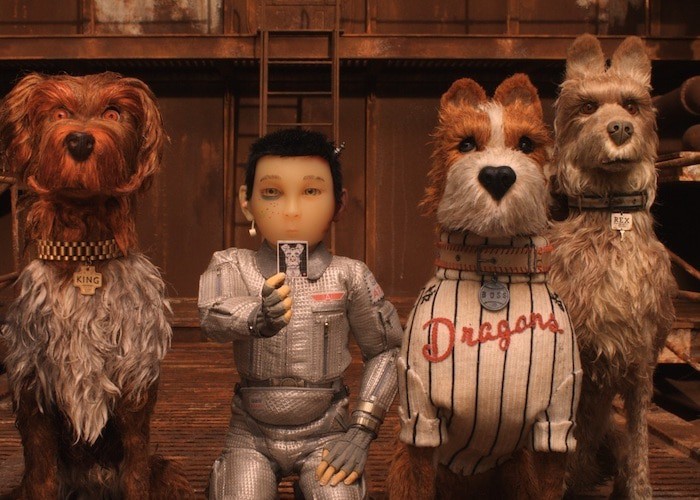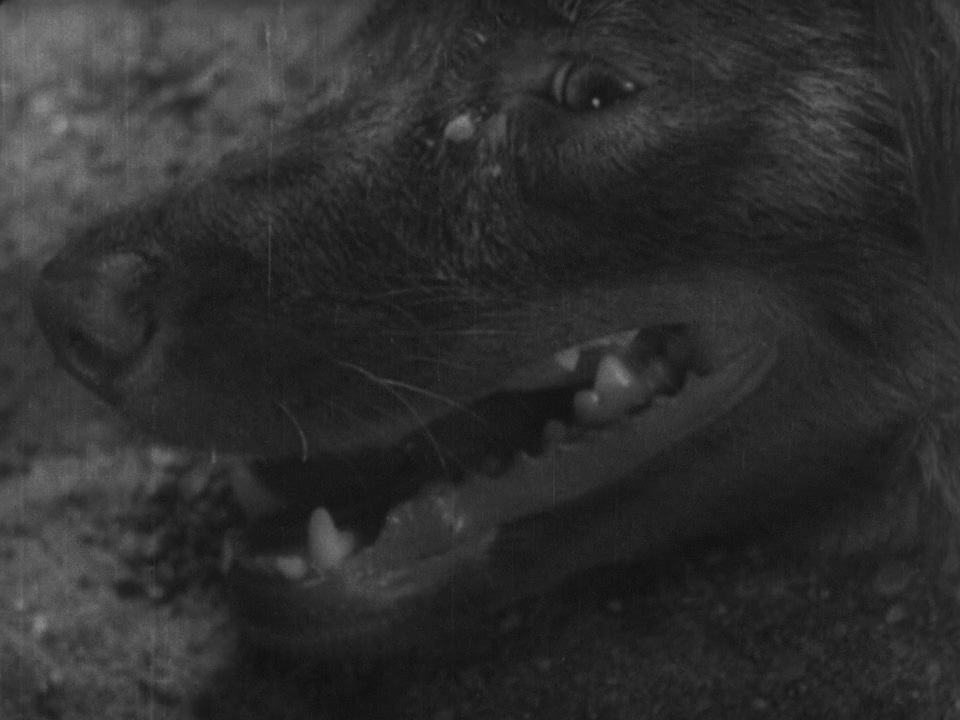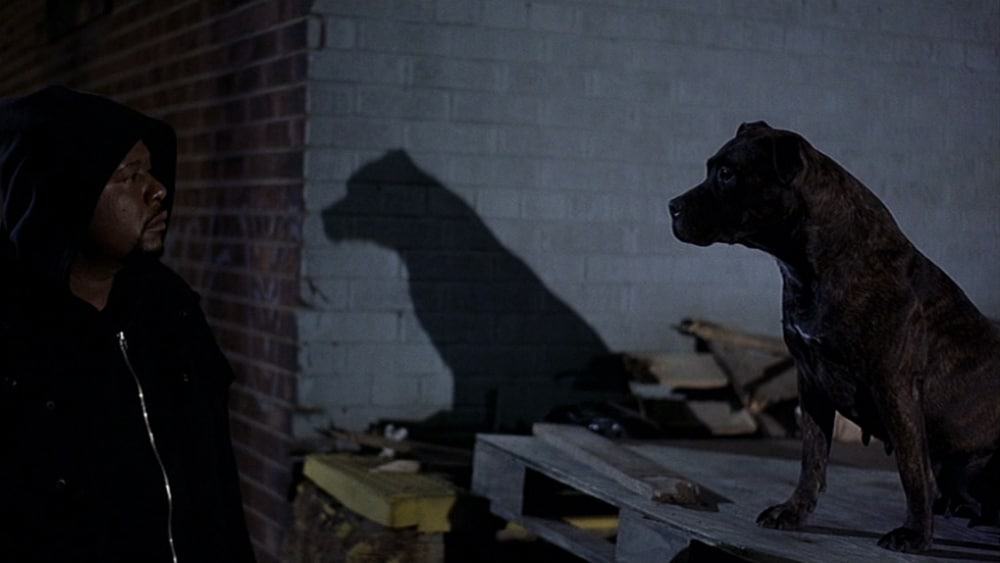
There is nothing else like a Wes Anderson movie, yet while he is an original auteur he does carry a lot of constant influences through his career, and each of his films also have their own specific cinematic inspirations. His latest, the stop-motion animated feature Isle of Dogs, for instance, is informed by and is a tribute to the classic Rankin-Bass holiday specials and Ray Harryhausen effects, as well as the work of Japanese masters Akira Kurosawa (whose birthday shares its release date), Hayao Miyazaki, Seijun Suzuki, and Yasujirô Ozu.
To help you navigate the new film’s pedigree, this week’s list of Movies to Watch After includes some of those specific connections as well as some other essential classics that I think are relevant and worth fetching. Check out the eight highlights plus additional viewing suggestions below.
Stray Dog (1949)

Kurosawa never made a sci-fi movie, and he never made a movie about actual dogs, but this early feature of his influenced by American detective films comes to mind in the absence of a literal link. And not just because of the title, which refers figuratively to the human lead, a cop played by a young Toshiro Mifune. He’s searching through a kind of garbage land just like the orphaned (read: stray) boy in Isle of Dogs, but it’s for his stolen pistol and the setting is simply Tokyo’s criminal underground.
Anderson actually was on hand for a Q&A at NYC’s Metrograph cinema on Wednesday after a screening of Stray Dog. The movie was part of a series he programmed of Kurosawa films that influenced his latest — the others being High and Low (which is particularly felt in the dynamic of Isle of Dogs‘s big deal villain who resembles Mifune and his relationship to a missing child), The Bad Sleep Well, Drunken Angel, I Live in Fear, and (my personal favorite) Ikiru. Basically the director’s “city films.” Some of these specifically informed the urban spaces of Isle of Dogs. “The look of Megasaki City came from the really urban, ’60s-set Kurosawa movies, from The Bad Sleep Well to High and Low,” Anderson told Texas Monthly.
Isle of Dogs also pays a good deal of homage to Kurosawa’s period-set films as well. The score for Seven Samurai is heard on the soundtrack at one point (as is the score for Drunken Angel), and the same movie gets some shot-for-shot reference too — for details on that and its tributes to Throne of Blood, Ran, and more, Vulture has a great guide to the Kurosawa Easter eggs. Stray Dog is also discussed there. But some eggs are likely still hidden given what Anderson said during a masterclass Q&A last year: “The reason to hide your [inspirations] is because you’re trying to steal them, and if you can sneak them in then you’ve gained something without having to lose something.”
Snoopy Come Home (1972)

While Rankin-Bass specials specifically inspired Wes Anderson’s interest in stop-motion animation, the “Peanuts” specials directed by Bill Melendez are one of the filmmaker’s biggest influences overall. Anderson expert Matt Zoller Seitz has addressed the connection in his writings and video essays as well as his book on Anderson. Supposedly there’s some nod to Charles Schultz’s iconic comic strip characters in every one of Anderson’s movies.
Perhaps the nod in Isle of Dogs is to this second theatrical “Peanuts” feature, which focuses on Snoopy’s trip to see his original owner in the hospital. Along the way, he encounters a lot of discrimination against dogs, though not as extreme as what happens to the canines in Anderson’s movie. Charlie Brown doesn’t go searching for his departed pet in Snoopy Come Home, but like Spots in Isle of Dogs Snoopy wouldn’t have initially wanted to be found anyway given that he had planned to go away for good.
The City of Lost Children (1995)

Both Isle of Dogs and this breakout work from French filmmakers Jean-Pierre Jeunet and Marc Caro are set in a retro-future world where a segment of the population is being shipped off to a man-made island structure. And both movies follow a character teaming with a group representing the very segment that is disappearing — though he’s not easily able to communicate with them — in order to find the one missing among that faction that he has a loving link to.
Sorry if the wording is confusing, but I’m trying to compare children to dogs here. In The City of Lost Children, a circus strongman (Ron Perlman) searches for his little brother, one of many kids who have been abducted and sent to an offshore oil rig. Along the way he aligns with a bunch of stray children who haven’t been taken, befriending one little girl in particular. The strongman isn’t the most skillful with words, but also he’s played by an actor who didn’t speak the same language as the rest of the cast.
Ghost Dog: The Way of the Samurai (1999)

I’m admittedly not that familiar with the work of Seijun Suzuki so don’t know what movie to recommend in relation to Isle of Dogs (I didn’t spot whatever homage there is), but I do know that Jim Jarmusch also pays the Japanese filmmaker respect in this movie, specifically referencing Suzuki’s 1967 hitman feature Branded to Kill. In Ghost Dog: The Way of the Samurai, Jarmusch also nods to Kurosawa in the form of a copy of the book “Rashomon.” Starring Forest Whitaker as a mob hitman who lives and works following the code of the samurai, the movie is Jarmusch’s ode to Japanese cinema, as Isle of Dogs is the same for Anderson.
As far as a cultural tribute, Ghost Dog probably comes off more innocently than others, including the controversial Isle of Dogs. From Quentin Tarantino’s Kill Bill Vol. 1 to the Disney animated feature Big Hero 6, a lot of Japanese-inspired American movies with good intentions are still criticized for their cultural appropriation and fetishization. And then there’s all the whitewashing adaptations of anime. Ghost Dog isn’t quite as respectful of the Japanese as not being viewed as an “other” as, say, Clint Eastwood’s The Sands of Iwo Jima or Martin Scorsese’s Silence or even Hou Hsiao-hsien’s love letter to Ozu, Café Lumière, but it’s also just not too heavy in its Japanophilia. In fact, it’s really just a matter of the main character being a Japanophile, while the film itself is more inspired by the French film Le Samouraï by Jean-Pierre Melville.
Regarding the subject of language barriers and clever devices for translation, as Isle of Dogs is being both praised and criticized for, there’s a funny story about the initial release of Ghost Dog. When the movie first opened at the Angelika Film Center in NYC in 1999, for at least a week (maybe two), there were no subtitles on the print for when a French-speaking ice cream man (Isaach de Bankolé) is talking. Like many, I thought this was intentional on the part of Jarmusch, especially since the joke is that Ghost Dog doesn’t understand him but keeps saying the same thing he says anyway. With the subtitles, the joke is clearer and more literal for the non-bilingual audience members, maybe even overdone, and I still wonder if Jarmusch did in fact mean for there to be no subtitles but enough people complained and Artisan Entertainment added them after the fact for that reason.
Related Topics: Movie DNA

